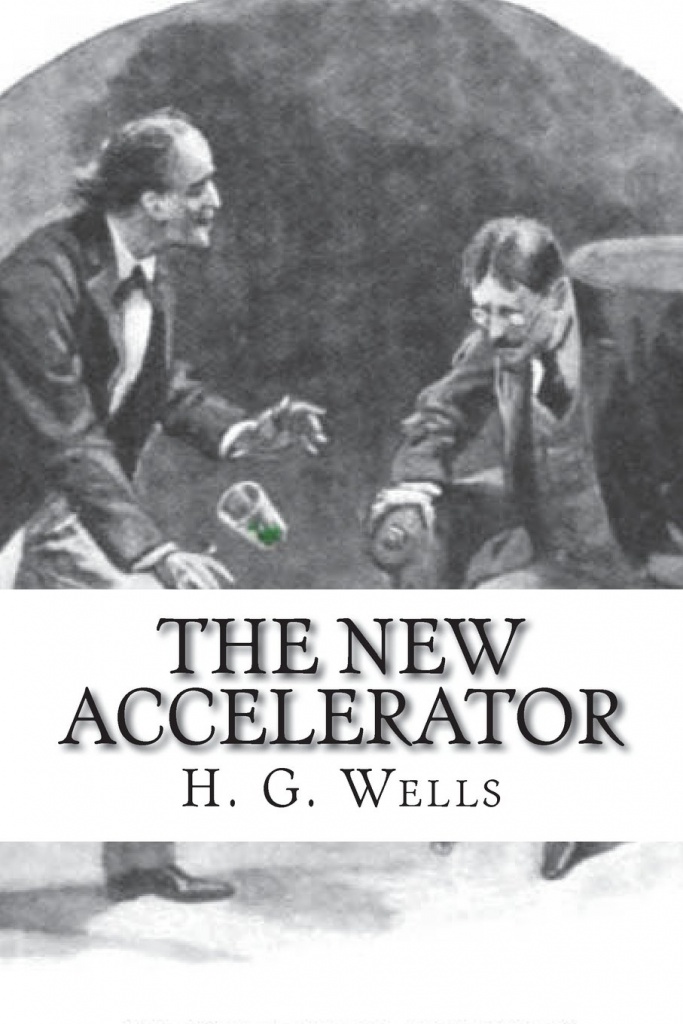“The New Accelerator” is a short story by the English author H. G. Wells (1866–1946), first published in the December 1901 edition of The Strand MagazineMonthly publication founded by George Newnes, published 1891–1950, credited with introducing the short story to a British audience. and subsequently reprinted in Twelve Stories and a DreamCollection of 13 short stories by H. G. Wells, first published in 1903. (1903) and The Country of the Blind and Other StoriesCollection of 33 short stories by H. G. Wells, first published in 1911. (1911).[1] The “New Accelerator” of the title is a fictional drug that speeds up the operation of the nervous system, and the story describes the effects it has on the two men who take it.
Synopsis
The story is narrated by a neighbour of Professor Gibberne, a chemist and physiologist who is working on a new drug to stimulate the nervous system, “an all-round nervous stimulant to bring languid people up to the stresses of these pushful days”. Gibberne has already invented his B Syrup for treating exhaustion, which the narrator credits with having saved more lives than any lifeboat.

The narrator begins by recalling a conversation he had with Gibberne a year earlier, about what the effects would be of a drug that could double the speed at which a man might move or think, and the advantages that might confer in being able to achieve twice as much as other men in a given time. Some doubts are expressed about the ethical implications of such a drug in a duel for instance, where speed of reaction could be the difference between life and death, but Gibberne dismisses such concerns.
Some time later the narrator meets Gibberne in the street. The professor claims to have developed a drug that accelerates the human nervous system by several thousand times, and invites him to his home to try it. They both take a small amount in a glass, mixed with water; Gibberne warns the narrator to keep the glass in his hand after he has drunk the contents, not to put it down and to close his eyes. After a few moments he hears Gibberne telling him to wake up, and everything seems just as it was, with Gibberne standing before him with an empty glass. Gibberne then lets go of the glass, but instead of falling to the floor it hangs motionless in the air; the narrator’s nervous system has been so accelerated that external events appear to him to be happening interminably slowly.
The two men go out for a walk around town. Almost everything they see is frozen in time; only the very fastest events, such as the flapping of a bee’s wings, are discernible. When they try to run, the friction of the air caused by their speed of two or three miles a second singes their clothes. Very suddenly the effects of the drug wear off, and just as suddenly they appear among the people to whom they had just been moving too quickly for them to have been perceived. Luckily for them only an old gentleman in a wheelchair notices their arrival, as the others are distracted by a nearby incident caused by Gibberne.
Gibberne and the narrator decide that the time is right to market what they decide to call Gibberne’s Nervous Accelerator, despite the opportunities it will provide for criminals to avoid justice by “dodging … into the interstices of time”, as they conclude that is a matter of medical jurisprudence and not their concern. “We shall manufacture and sell the Accelerator, as for the consequences – we shall see.”
Commentary
The story is, of course, a variant on the theme of time travel. The founder of the H. G. Wells Society, J. R. Hammond, has observed that “The New Accelerator” gives a “vivid sense of the novelty … of living for half an hour while the remainder of humanity lives through a second or so of normal time”.[2]
See also
- H. G. Wells bibliographyList of publications written by H. G. Wells during the more than fifty years of his literary career.
External links
- Full text of “The New Accelerator” at Project Gutenberg
